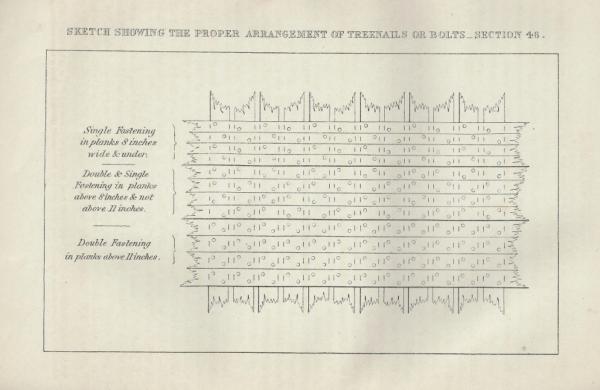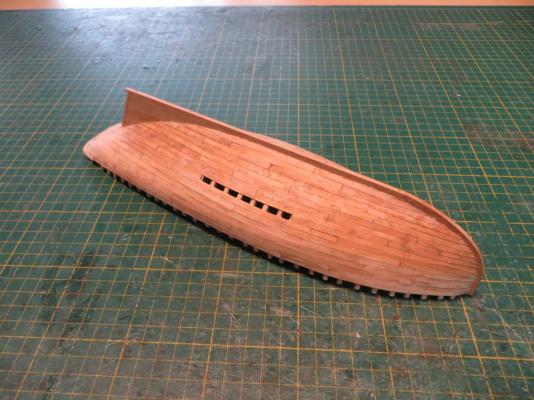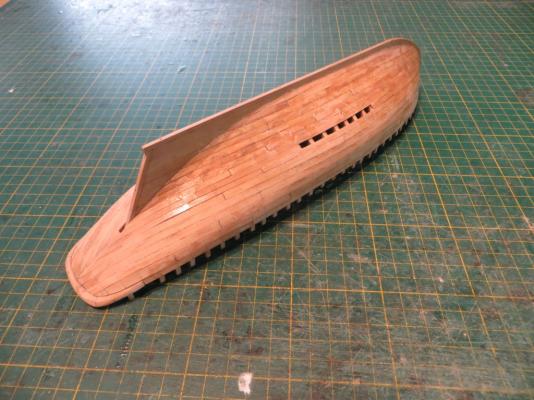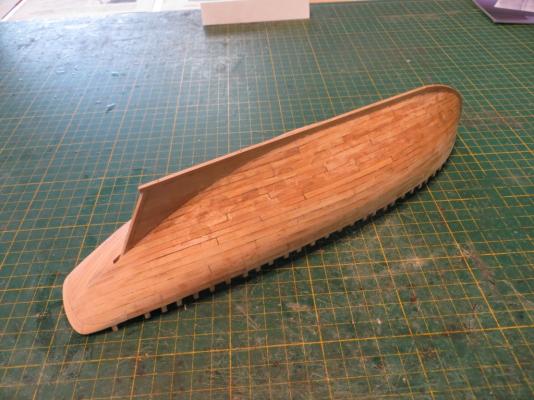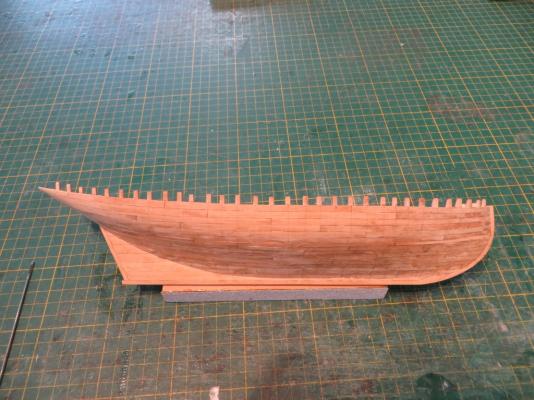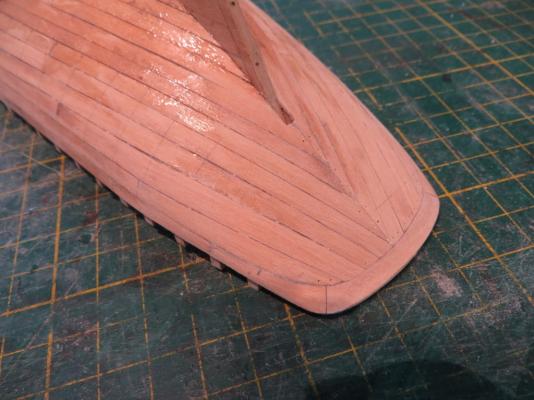-
Posts
9,322 -
Joined
-
Last visited
Content Type
Profiles
Forums
Gallery
Events
Everything posted by Jim Lad
-
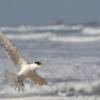
Iron stropping on Webb packet ships?
Jim Lad replied to John R. McGann's topic in Masting, rigging and sails
Jamieson notes ships' blocks as being 'stropped with either rope or iron' in his "A Dictionary of Mechanical Science, Arts, Manufactures, and Miscellaneous Knowledge" of 1829. John -
Phil, Having had a close look at both Steel and Lever, I can offer the following advice for the way flying square ails were set in British ships. The flying yards were usually rigged without braces or lifts, but occasionally had braces (as in revenue cutters). If braces were fitted, then they were rigged to the yard and sent up with it. The halliard was rigged through a sheave in the mast and the sail secured to the yard with lengths of sennit. It was sent aloft from the deck by simply heaving it up with the halliard, which was stoppered to one end of the yard so that it went up vertically. When the yard was aloft a boy sent aloft for the purpose would cut the stopper on the halliard and secure the clues of the sail by lashing them to the ends of the yard below, and the flying yard would then be hoisted right up. I hope this is helpful. If unclear, please let me know and I'll see if I can make my description a little better. John
-
Very neat looking coppering (and it's great to see that you're working on her )! John
- 161 replies
-
- pegasus
- victory models
-
(and 1 more)
Tagged with:
-
I just use an old office chair, Mario - whatever's comfortable for you is the way to go. John
-
Very nice indeed, Popeye - she's really coming on now. John
- 956 replies
-
- andrea gail
- trawler
-
(and 1 more)
Tagged with:
-

Is there a better #11 blade handle
Jim Lad replied to roach101761's topic in Modeling tools and Workshop Equipment
Phil, I use scalpel blades and scalpel handles. I've had my current scalpel handles for many years. Just a tip - don't buy from a surgical supply house - they charge like wounded buffaloes; some hobby shops sell genuine scalpel blades and handles, itherwaise you can get them a bit cheaper (for the same product) than at surgical suppliers by going to a veterinary supply place. John -
A agree - it's all looking very realistic, Popeye! John
- 956 replies
-
- andrea gail
- trawler
-
(and 1 more)
Tagged with:
-
They look really good, Popeye, but I'd expect that main deck door to have a high sill across the bottom to keep the damp out. John
- 956 replies
-
- andrea gail
- trawler
-
(and 1 more)
Tagged with:
-
Thanks for the encouragement, Matija. John
- 745 replies
-
- francis pritt
- mission ship
-
(and 1 more)
Tagged with:
-
Thanks again one and all! Bamboo for the treenails and, no, I'm never tempted to leave one or two planks out - 'though I am tempted to one day build a model with far more detailed framing and one side left in frame and the other planked. It was good to meet Bedford on Wednesday at the museum - a man with a very new understanding of what the sea can do! John
- 745 replies
-
- francis pritt
- mission ship
-
(and 1 more)
Tagged with:
-
Keep those details coming, Popeye - they're what make your models! John
- 956 replies
-
- andrea gail
- trawler
-
(and 1 more)
Tagged with:
-
As I'm about to start treenailing my 'Francis Pritt', I thought I'd better check up the correct method for plank fastening. For those interested in wooden merchant ships the following illustration may be of interest. It's from the 1890 edition of Lloyds Register's 'Rules and Regulations' and shows the correct distribution of hull plank fastenings for planks of various widths. John
-
Well, all the hull planks are finally on! While I enjoy planking, I'm really glad that this part of the build is completed and I can get on with other stuff - like drilling lots of holes and then filling them in again - otherwise known as treenailing! Here are some photos of what she looks like at the moment. John One Plank to go! No Planks to go!! And a close up of the partly cleaned up stern just to see what it might look like later.
- 745 replies
-
- francis pritt
- mission ship
-
(and 1 more)
Tagged with:
-
Beautiful work again, Augie! John
- 2,191 replies
-
- confederacy
- Model Shipways
-
(and 1 more)
Tagged with:
-
Crikey! That's some setup for your models, Toni! John
- 1,449 replies
-
Thanks for posting these, mate. Haven't been down the coast for a couple of years. It's good to see that the museum is still alive and well. John
About us
Modelshipworld - Advancing Ship Modeling through Research
SSL Secured
Your security is important for us so this Website is SSL-Secured
NRG Mailing Address
Nautical Research Guild
237 South Lincoln Street
Westmont IL, 60559-1917
Model Ship World ® and the MSW logo are Registered Trademarks, and belong to the Nautical Research Guild (United States Patent and Trademark Office: No. 6,929,264 & No. 6,929,274, registered Dec. 20, 2022)
Helpful Links
About the NRG
If you enjoy building ship models that are historically accurate as well as beautiful, then The Nautical Research Guild (NRG) is just right for you.
The Guild is a non-profit educational organization whose mission is to “Advance Ship Modeling Through Research”. We provide support to our members in their efforts to raise the quality of their model ships.
The Nautical Research Guild has published our world-renowned quarterly magazine, The Nautical Research Journal, since 1955. The pages of the Journal are full of articles by accomplished ship modelers who show you how they create those exquisite details on their models, and by maritime historians who show you the correct details to build. The Journal is available in both print and digital editions. Go to the NRG web site (www.thenrg.org) to download a complimentary digital copy of the Journal. The NRG also publishes plan sets, books and compilations of back issues of the Journal and the former Ships in Scale and Model Ship Builder magazines.



